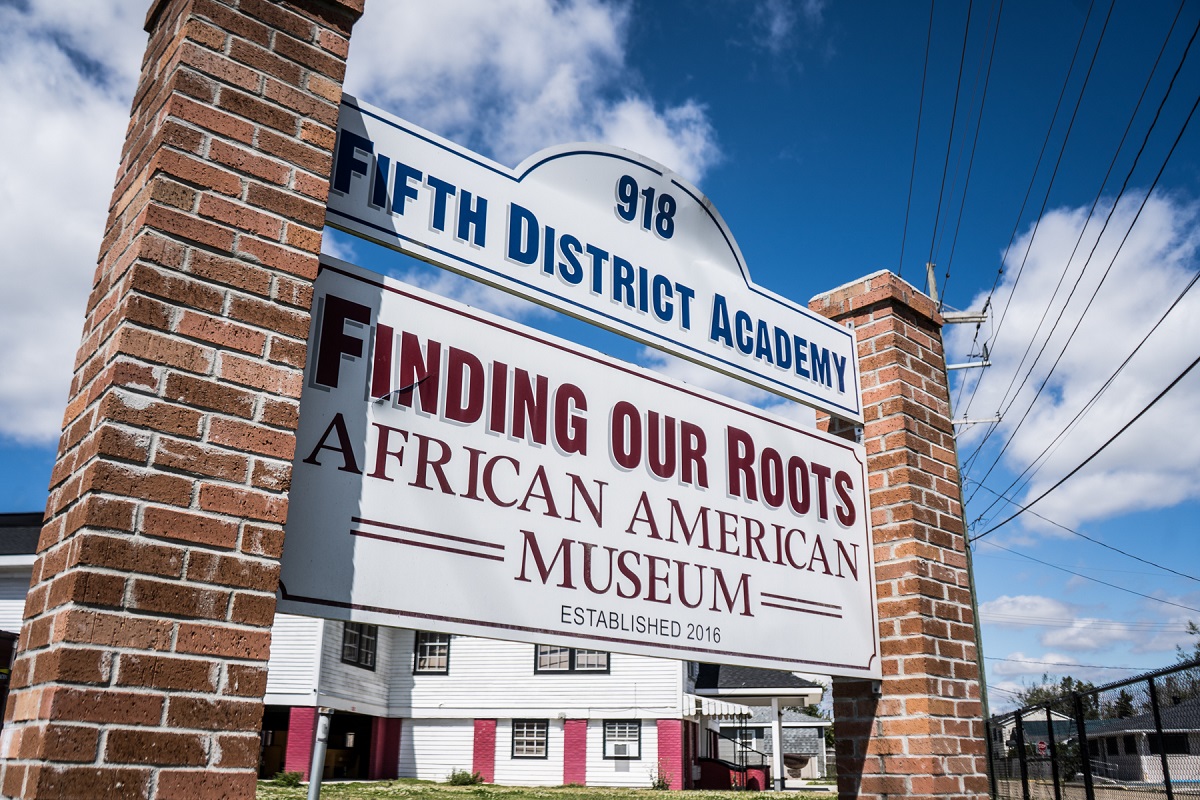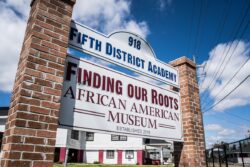Summer 2022
Who Belongs to the Good Earth?
A Houma museum commemorates the parish’s Black heritage
Published: May 31, 2022
Last Updated: October 12, 2023

Photo by Kezia Setyawan
This good earth has been through a lot. It has been under the stewardship of Indigenous communities, who remain here today. It benefited the settlers who came, logged, traded furs, and harvested seafood. It supplied sugar cane for export, grown and harvested by the labor of enslaved African Americans. It has lived through, and continues to live through, our civilization’s crippling overreliance on the oil and gas industry.
Terrebonne’s five bayous are among the most rapidly eroding places in the United States today, and Louisiana loses a football field of coastline every one hundred minutes, with abandoned gas canals contributing to the saltwater intrusion.
Some say that history is written by the victors. But in this community, people have worked to spotlight voices historically left behind. The Finding Our Roots African American Museum, located at 918 Roussell Street in Houma, hosts a plethora of artifacts, photos, records, and other materials, documenting African American history and culture in the tri-parish region. The museum first opened in 2017, with museum founder and president Margie Scoby saying that her vision was pushed by her faith in God to fulfill a need in the community. “My passion is to keep the history of my people alive,” Scoby said.
Museum vice president Alvin Tillman said it was important for the community to have something that relates to the rich history of Terrebonne Parish. “To know where you’re going, you also got to understand where you’re from,” Tillman said.
The museum building itself, which suffered damages from Hurricane Ida causing black mold and buckling ofthe floor, is a historic site. The museum was previously the Fifth District Academy, which was the first school for African American students in Terrebonne Parish—particularly noteworthy in a parish where many of the public schools are named after plantations.
By 1851, Terrebonne Parish had 110 plantations with eighty sugar houses. A large copper bowl for boiling sugarcane sits outside of the museum, and Scoby pointed out how the enslaved were at risk of injury or death from the work. The museum’s newest exhibit opened in April last year. Blood, Sweat, and Tears documents one of the last slave ships, the Wanderer, which in 1858 brought more than four hundred people illegally to American shores, some of whom were sold into slavery in Terrebonne, Lafourche, and St. Mary Parishes. The exhibit also includes soil samples from plantations in the area. Scoby has connected descendants in the parish to their enslaved ancestors through ledgers and other documentation.
Some say that history is written by the victors. But in this community, people have worked to spotlight voices historically left behind.
Tillman himself has family roots from Hollywood Plantation and found an ancestor who was sold in the 1838 Georgetown University slave sale, which raised funds to save the school through the sale of 272 enslaved people, mostly to three plantations in South Louisiana. “I really didn’t know anything about the Georgetown initiative. But then to learn about it, and not only to learn about it, to find out that you were part of it,” Tillman said. “It made me very reflective.”
Tillman, who has previously held leadership positions such as parish councilman and was appointed the first Black council president in 2017, said his favorite part of the museum is the hallway spotlighting local leaders—and getting to teach visitors, young and old, new things.
“It’s the public’s museum. It’s for us,” Tillman said. “It’s for the public to share and get knowledge about our history.”
As the museum recovers, its leaders have become creative about the programming they can bring to the community. For Black History Month this year, Scoby and Legacy Business Center founder and owner Aronda Smith-Benson devised an event with the theme “Celebrating Our Stories,” sharing Black history through the stories of three local people: James Harris, owner of James Cleaners, the first Black-owned business, founded in 1966; Lynne George, the first Black student to integrate St. Francis de Sales Cathedral School in 1964; and Isaiah Toussaint Sr., a United States Army World War II veteran.
“I’ve been through many trials and tribulations,” said Toussaint to the audience. “I do thank God for the blessings given to me.”
Presenter Paula Smith-Benson reminded the audience: their community stands on the shoulders of giants. “They paved the way,” Smith-Benson said. “We’re standing in the midst of history.”
And standing in front of the youth, Scoby talked about the importance of continuing to document this work. “We have to keep up what our people have started,” Scoby said.
Kezia Setyawan is a coastal reporter for WWNO and WRKF and is based out of Houma. She previously worked as a general reporter for the Courier and Daily Comet in the Houma-Thibodaux area and Snowden intern at the Malheur Enterprise in Vale, Oregon. Her work uses storytelling to center and amplify the voices of those who have been pushed to the margins.
